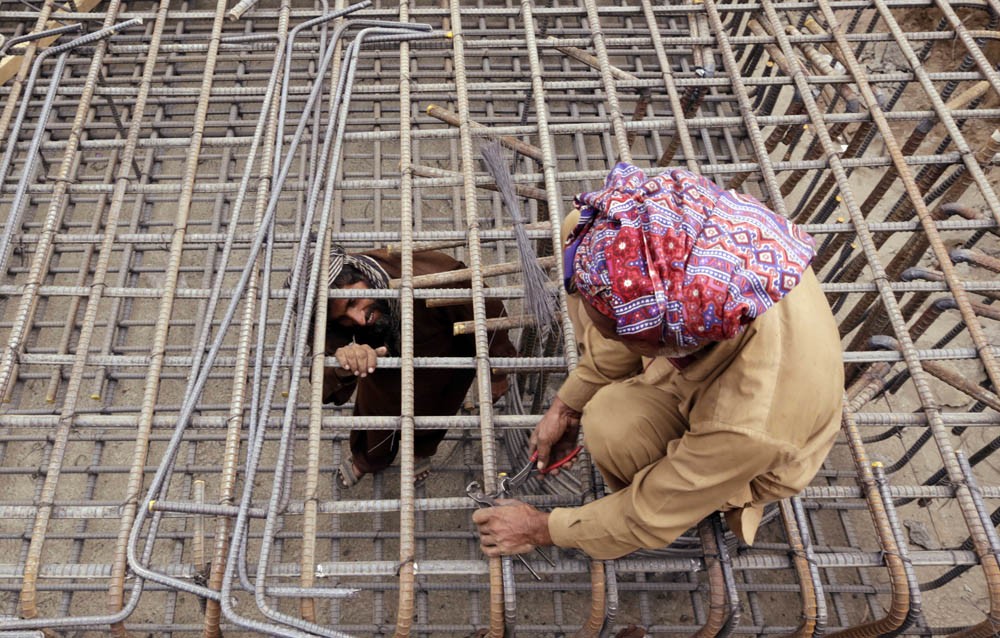
Many laws deal with occupational health and safety of the workers. The compliance of these laws has never been satisfactory

Occupational health and safety (OHS) is an integral component of the global work agenda. Fire accidents in garment factories in Pakistan and Bangladesh in 2012 and the garment factory collapse in Bangladesh in 2013, claimed thousands of lives of poor workers.
Pakistan’s Labour Force Survey claims that 4 per cent of the total employed persons face occupational injury/ disease in Pakistan. This ratio is much higher in the informal sector.
Agriculture which employs 42.3 per cent of the total labour force is the most vulnerable industry regarding occupational health and safety. According to the survey, 48 per cent of agriculture workforce faces occupational diseases/accidents which are quite alarming.
The second most vulnerable area is the construction industry where 16.3 per cent workers face occupational diseases/accidents, closely followed by the manufacturing industry where the ratio is 15.9 per cent.
Occupational health and safety remained a low priority for the government of Pakistan. The above-mentioned statistics reflect the lack of safety arrangements at workplaces although a significant number of cases remain unreported.
The ILO has formulated three fundamental standards for OHS which includes: C155, the Occupational Safety and Health Convention 1981; C161, the Occupational Health Services Convention 1985; and C187, the Promotional framework for Occupational Safety and Health Convention 2006. Pakistan has not ratified any of these three fundamental conventions showing lack of interest towards safety and health of workers.
The Factories Act 1934 in Pakistan deals with occupational health and safety of the workers. However, the compliance of the law has never been satisfactory. Absence of labour inspection system and limited or no freedom of association and collective bargaining remained the foremost obstacles for the workers’ resistance and demand for safe workplaces, especially in the growing informal sector.
The Baldia factory fire accident in 2012 claimed 256 lives of the poor workers. Many were injured. Death toll increased due to lack of fire safety arrangements, especially lack of emergency exits in the factory building.
The national labour legislation framework has been influenced by the Baldia fire accident. The government of Sindh, with the help of ILO, came up with a Joint Action Plan on Occupation Health and Safety in 2013 through a tripartite process and later with a draft of Occupation Safety and Health Policy of Sindh 2014. The provincial law on OHS is still to be approved by the provincial cabinet.
One of the fatal occupational diseases which have come under discussion during recent years is Silicosis -- a medical condition that causes perforation of the lungs and ultimately leads to death. Silicosis has drawn attention in Pakistan after the death of 18 poor workers engaged in stone-crushing industry in Punjab.
In response to an application, Supreme Court of Pakistan in 2015 ordered the federal and provincial governments to come up with an action plan to halt the emergence of silicosis in Pakistan but it needs to be given more attention on the ground.
The disease is not only limited to the stone-crushing industry but it has reportedly affected thousands of garment workers engaged in sandblasting processes for jeans in different parts of the world.
The state should ensure workers’ rights, especially the health and safety arrangements to comply with the constitutional provisions for labourers as well as to fulfill international commitments of the state.
Better health and safety arrangements at workplace in Pakistan will not only save workers lives, it will help employers in attracting more business as buyers now seek improved working conditions due to growing international pressure of consumers.